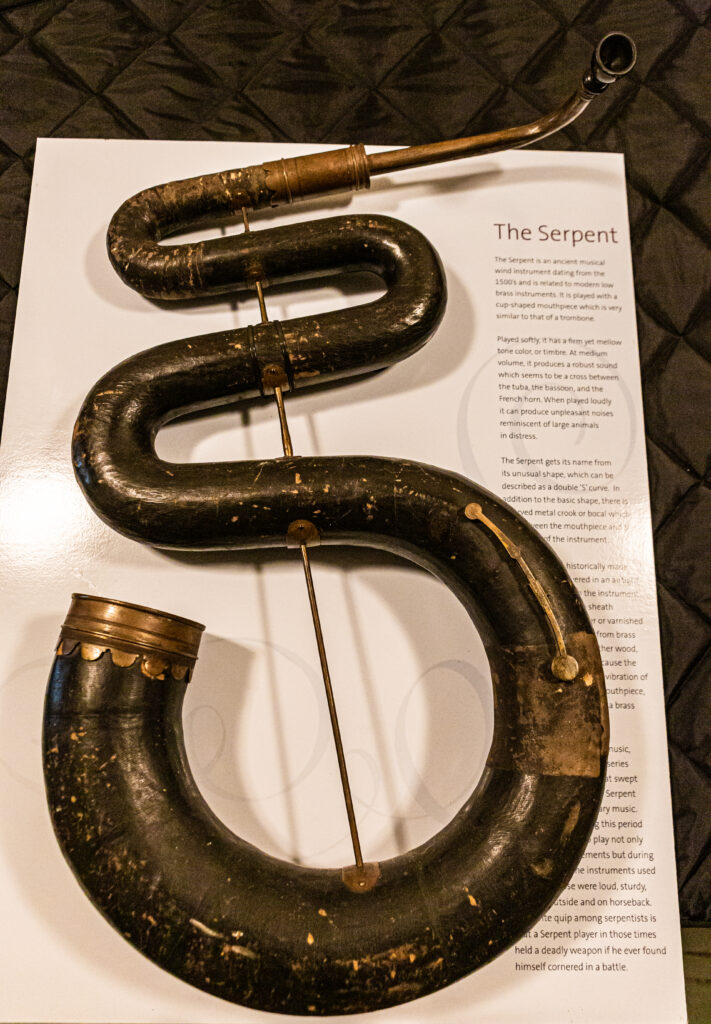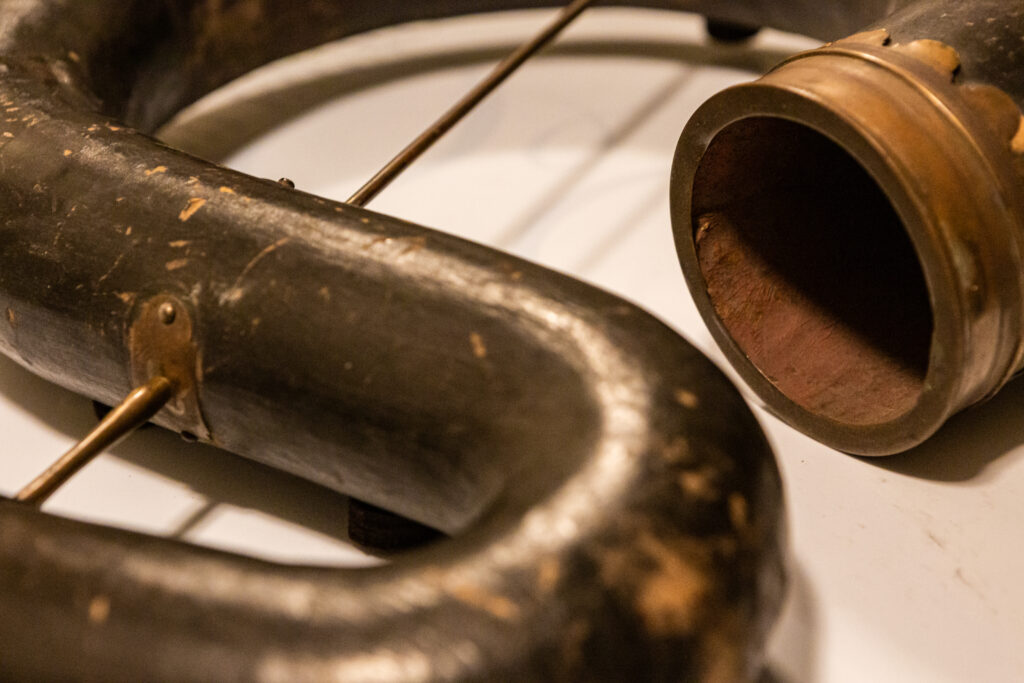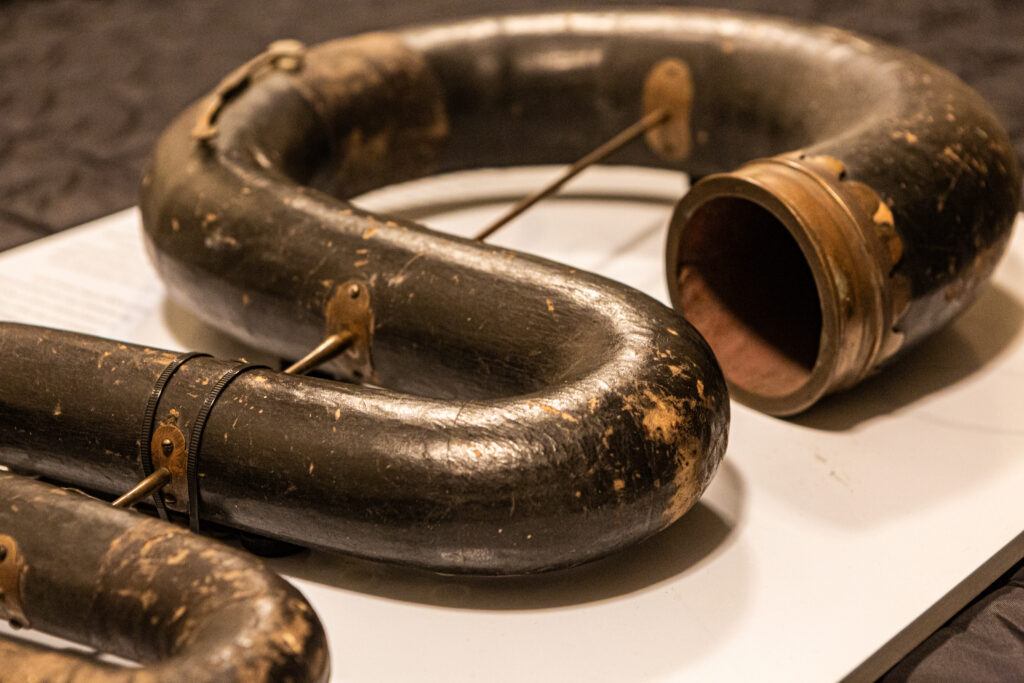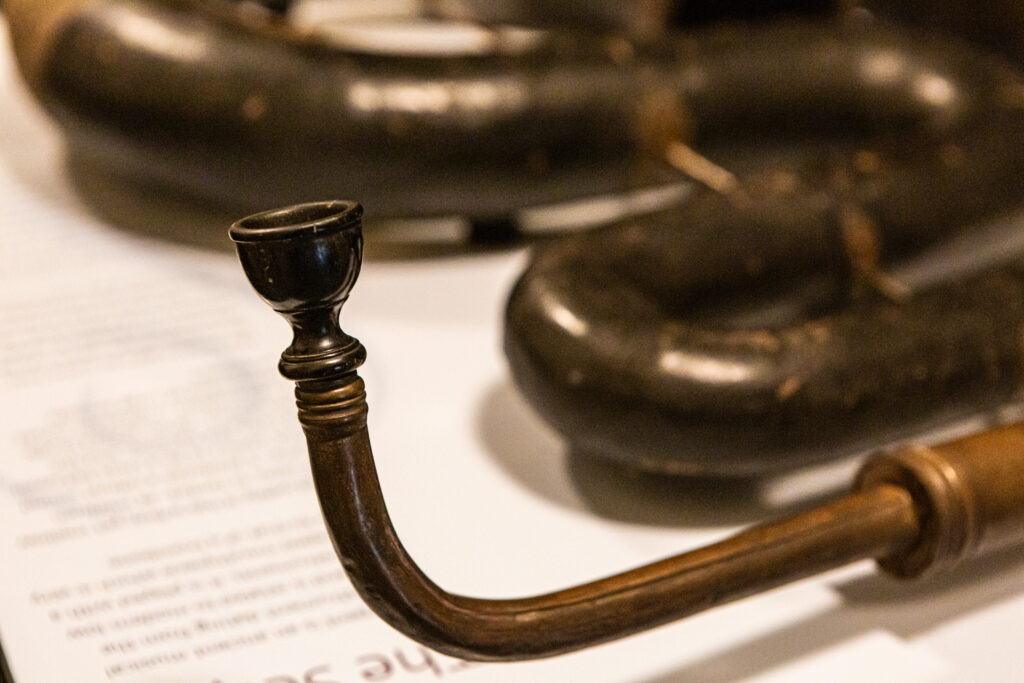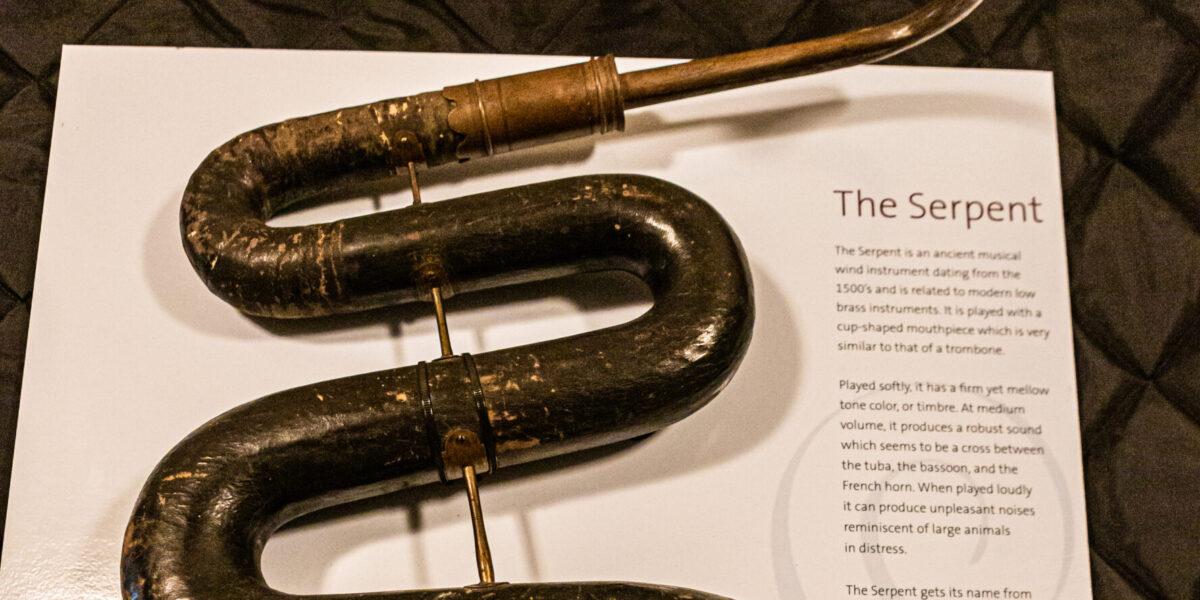The Serpent is an ancient musical wind instrument dating from the 1500’s and is related to modern low brass instruments. It is played with a cup-shaped mouthpiece which is very similar to that of a trombone.
Played softly, it has a firm yet mellow tone color, or timbre. At medium volume, it produces a robust sound which seems to be a cross between the tuba, the bassoon, and the French horn. When played loudly it can produce unpleasant noises reminiscent of large animals in distress.
The Serpent gets its name from its unusual shape, which can be described as a double ‘S’ curve. In addition to the basic shape, there is a curved metal crook or bocal which fits between the mouthpiece and the main body of the instrument.
The Serpent was historically made from wood and are covered in an airtight sheath to strengthen the instrument and prevent leaks. The sheath material is either leather or varnished cloth. The crook is made from brass and the mouthpiece is either wood, ivory, or a plastic resin. Because the sound originates with the vibration of the player’s lips in a cup mouthpiece, the Serpent is classified as a brass instrument.
Originally used in church music, at some point during the series of military campaigns that swept Europe in the 1700s, the Serpent came into use for military music. It was common during this period for military bands to play not only during troop movements but during actual battles. The instruments used for this purpose was loud, sturdy, playable outside and on horseback. A favorite quip among serpentists is that a Serpent player in those times held a deadly weapon if he ever found himself cornered in a battle.
